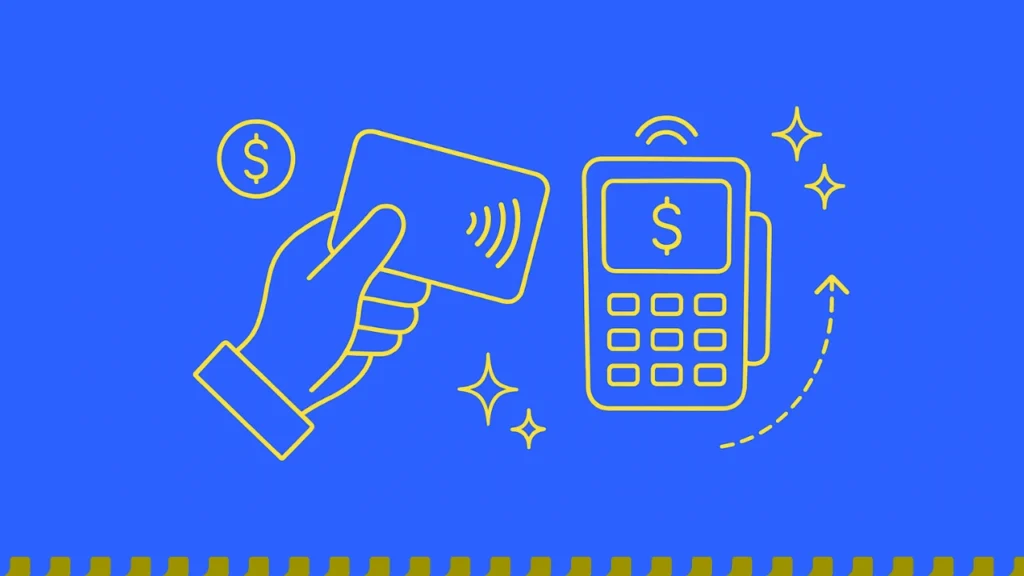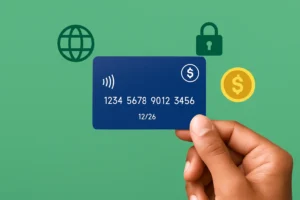Contactless payments have emerged as a game-changer, providing a seamless and secure way to make transactions. According to recent statistics, the adoption of contactless payments has seen a significant rise, with an 86% global adoption rate. If you’ve heard of touch-and-go payments, then you are closer to understanding the concept of contactless payments.
But what exactly are contactless payments, and how do they differ from traditional forms of transactions?
In this blog, we’ll discuss the meaning of contactless payments and how they work. Let’s get started!
What is Contactless Payment?
Contactless payments refer to a secure method of transaction that allows consumers to make purchases by simply tapping or waving their contactless-enabled cards, smartphones, or wearable devices near a point-of-sale (POS) terminal.
This eliminates the need for physical contact or the insertion of cards into a machine, providing a swift and convenient alternative to traditional payment methods for e-commerce businesses.
The technology behind contactless payments utilizes radio-frequency identification (RFID) or near-field communication (NFC) for payments. As a result, this enables the seamless transfer of payment information between the consumer’s device and the merchant’s terminal.
One of the standout features of contactless payments online is the speed at which transactions are processed. With a simple tap or wave of a contactless-enabled card or device near a compatible terminal, the transaction is completed in a matter of seconds.
Contactless payments seamlessly integrate with mobile wallet applications. Users can add their payment cards to digital wallets on their smartphones, consolidating their payment methods and enabling them to make contactless payments using their mobile devices.
How Does a Contactless Payment Work?
Contactless payments work through the use of radio-frequency identification (RFID) or near-field communication (NFC) technology.
The process involves a secure and swift exchange of information between a contactless-enabled card, smartphone, or wearable device and a compatible point-of-sale (POS) terminal.
Here’s a step-by-step breakdown of how a typical contactless payment transaction works:
Contactless-Enabled Device
The process begins with the user possessing a contactless-enabled card, smartphone, or wearable device. This device contains an embedded RFID chip or an NFC antenna, allowing it to communicate with other compatible devices over short distances.
Merchant’s POS Terminal
The merchant must have a POS terminal equipped with contactless payment for business capabilities. These terminals are designed to accept payments through the contactless method and are commonly identified by the contactless symbol (a series of four curved lines) displayed on the terminal.
Initiating the Transaction
When the user is ready to make a purchase, they bring their contactless-enabled device within proximity (usually a few centimeters) of the POS terminal.
Data Transmission
The contactless device and the POS terminal communicate through either RFID or NFC, depending on the technology used. The user’s device transmits payment information, including a unique token generated for that specific transaction.
Tokenization
Tokenization is a crucial security feature in contactless payments. Instead of transmitting sensitive information, such as the actual card number, a unique token is generated for each transaction. This token is a one-time code that is meaningless to potential attackers, adding a layer of security to the payment process.
Authorization and Payment Processing
The POS terminal receives the token and forwards it to the payment network for authorization. The payment network verifies the token and ensures that the user has sufficient funds or credit for the transaction. If authorized, the payment is processed.
Transaction Confirmation
Once the payment is authorized and processed, the user receives confirmation of the transaction. This confirmation may include a beep or visual notification on the POS terminal, as well as on the user’s device.
Transaction Completion
The entire contactless payment transaction is completed within seconds, providing a fast and efficient alternative to traditional payment methods.
5 Contactless Payment Benefits
Contactless payments offer a range of benefits that contribute to their growing popularity among consumers and businesses.
Here are five key advantages of using contactless payment methods:
Speed and Efficiency
Contactless payments are known for their remarkable speed, allowing users to complete transactions in a matter of seconds. With a simple tap or wave of a contactless-enabled card, smartphone, or wearable device, the payment is swiftly processed. This efficiency is especially advantageous in environments with high transaction volumes, such as busy retail stores or public transportation.
Convenience and Ease of Use
The convenience of contactless payments lies in their simplicity. Users do not need to insert cards into terminals or enter PINs, streamlining the payment process. This ease of use makes contactless payments accessible to a wide range of users, including those who may not be comfortable with or able to use traditional payment methods.
Enhanced Security
Contactless payments incorporate advanced security features, including tokenization. Instead of transmitting sensitive information like the actual card number, a unique token is generated for each transaction.
This makes it significantly more challenging for unauthorized parties to access and misuse payment data. Additionally, the short-range nature of contactless transactions reduces the risk of interception.
Versatility Across Devices
Contactless payment technology is versatile and can be integrated into various devices. Whether using contactless-enabled cards, smartphones with mobile payment apps (e.g., Apple Pay, Google Pay), or wearable devices like smartwatches, users have the flexibility to choose the device that suits their preferences.
This versatility contributes to the widespread adoption of contactless payments across different demographics.
Reduced Need for Physical Cash
Contactless payments contribute to the decreasing reliance on physical cash. As more individuals and businesses embrace contactless technology, the need to carry and handle cash diminishes.
This not only aligns with the trend toward a cashless society but also reduces the risks associated with carrying and managing physical currency.
6 Contactless Payment Methods
Contactless payment methods have become increasingly diverse, offering users various options for making transactions without physical contact with payment terminals. Here are six commonly used contactless payment methods:
Contactless Cards
Traditional credit and debit cards can be upgraded to include contactless technology. These contactless cards have a small contactless symbol (usually four curved lines) on them, indicating that they can be used for tap-and-go transactions. Users can make payments by tapping or waving their contactless cards near a compatible POS terminal.
Mobile Payment Apps
Mobile contactless payment apps enable users to make contactless payments using their smartphones. Examples of popular mobile payment apps include:
- Apple Pay: Compatible with Apple devices, users can add credit and debit cards to their Apple Wallet and make payments by tapping their iPhones or Apple Watches.
- Google Pay: Available for Android users, Google Pay allows users to add cards and make contactless payments using their smartphones.
- Samsung Pay: Samsung’s mobile payment app is compatible with Samsung devices and offers similar functionality, allowing users to make payments using their smartphones.
Smartwatches
Many smartwatches are equipped with NFC technology, enabling users to make contactless payments directly from their wrists. Users can link their credit or debit cards to their smartwatches, allowing for convenient and secure transactions.
Wearable Devices
Beyond smartwatches, other wearable devices such as fitness trackers and payment-enabled jewelry may also support contactless payments. These devices typically incorporate NFC payment technology to facilitate transactions.
Biometric Payments
Some contactless payment methods leverage biometric payment authentication for added security. This can include fingerprint or facial recognition technology. Users can authorize payments through biometric verification, adding an extra layer of protection to their transactions.
QR Code Payments
While not strictly “tap-and-go,” QR code payments have become a popular contactless method. Users can scan a merchant’s QR code using their smartphone’s camera, and the payment information is processed through a mobile payment app. This method is widely used in various regions, especially in markets where NFC infrastructure might be limited.




